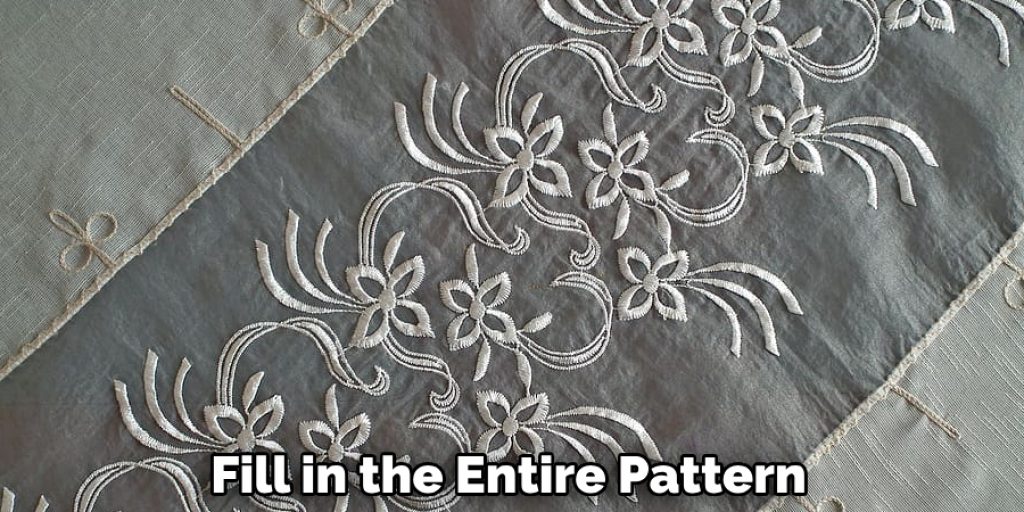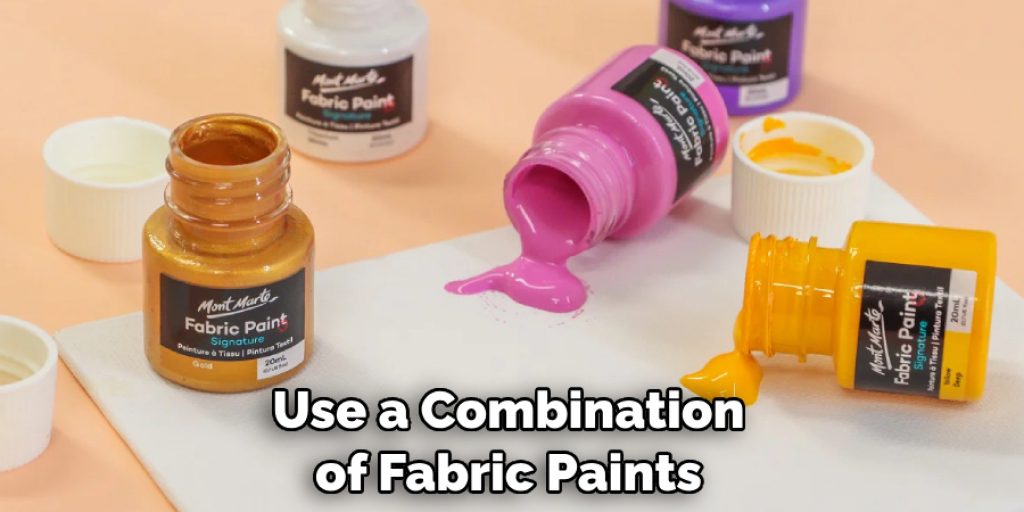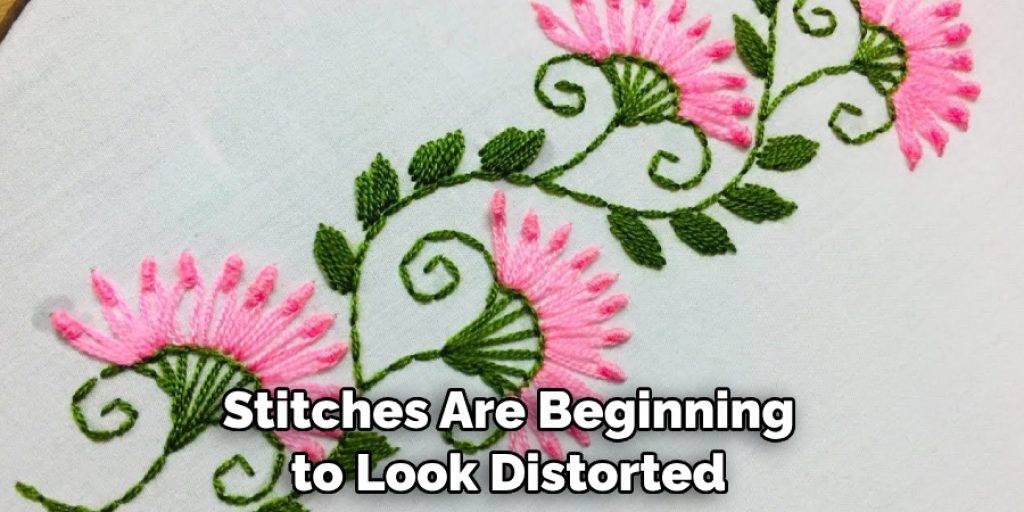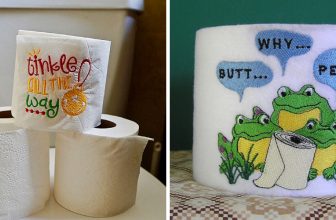How to Embroidery on Towels
Embroidery on towels is a great way to add a special touch to your home decor. Not only does it look beautiful, but with the right technique and materials, you can create durable designs that will last for years. Embroidering on towels also provides a unique way to personalize gifts, including baby blankets or monogrammed hand towels.

Embroidery on towels has several advantages. First, it adds an eye-catching decorative element to the towel that can be used for various occasions. Embroidery also makes the towel more personalized and unique; it is easy to customize any type or design of embroidered pattern onto a towel for a special occasion. In this blog post, You will learn in detail how to embroidery on towels.
Step-by-Step Processes for How to Embroidery on Towels
Step 1: Inspect the Towel Carefully
Before you begin, it’s important to inspect the towel. Check for any flaws or irregularities that might interfere with your embroidery project. Clean the surface of your towel before beginning. Ensure there are no lint pieces or other debris that could get in the way while you work. You can use a lint roller to pick up any small pieces.
Step 2: Select Your Embroidery Design
Choose the design or pattern you’d like to embroider onto your towel. Make sure the pattern is big enough to fit on the surface of your towel. If not, you can adjust it using editing software or create a new pattern that better suits your needs. Trace your design onto the towel using a fabric marker or tailor’s chalk. Make sure you press lightly to avoid making any permanent marks on the towel.
Step 3: Prepare Your Embroidery Thread
Cut several strands of matching thread for your project. The length of your thread should be at least four times the width of your pattern. Cut a piece of thread about 18 inches long for each strand and thread it through the eye of your needle. Pull the two ends together, knotting them to secure the thread.
Step 4: Begin Embroidering
Start by pushing the needle through the back side of your fabric. Then, bring it up and around the edge of your design, following the pattern or outline you traced on the towel. Continue to embroider your design along its lines, bringing each stitch up and over a small section at a time to fill in the entire pattern.

Step 5: Finish Your Embroidery
Once you’ve filled in your design, trim any excess thread with scissors and knot the loose ends together on the back of your fabric. This will secure your embroidery in place. Remove any lingering traces of tailor’s chalk or fabric marker with a damp cloth. Let your towel air dry before using it or displaying it.
You’ve now successfully embroidered a design onto your towel.
Precautions for How to Embroidery on Towels
- Choose a quality embroidery thread that won’t break easily when pulled through the towel fabric. You may want to test different threads before beginning your project.
- Always use an appropriate needle size for the type of embroidery and fabric you plan on using. Smaller needles work better with delicately woven materials like towels, as larger needles can cause the fabric’s fibers to unravel.
- Use a hoop when embroidering on towels. This will help keep your fabric taut and prevent it from shifting while you stitch.
- Pre-wash or pre-treat your towels before beginning any embroidery work, as this will help set the dyes in the material and minimize the chances of your colors running.
- Choose a design with fewer details and smaller stitches when embroidering onto towels, as this will help keep the fabric from distorting or getting pulled.
- Dampen your towel before beginning to stitch so that it is easier to manipulate while you embroider. Keep a spray bottle nearby for this purpose.
- Take your time and be patient when embroidering on towels, as the fabric is delicate and can easily become stretched or distorted if you are too rough with it.
Once your design is complete, press from the back to help keep the stitches in place and ensure they don’t slip out of alignment over time.
How Do You Care for Your Embroidered Towel?
Once you have completed your embroidery project on a towel, there are some important steps to take to preserve and care for it properly. First, you must wash the towel before using or displaying it. Depending on the type of fabric used, you should use either cool water and mild detergent or warm water and a gentle detergent for the job. If you are unsure which detergent to use, consult the care label on your towel before washing it.

Be sure to avoid using harsh bleaches or detergents that contain chlorine, as these can cause damage to the fabric and fade the colors of your embroidery design. When machine drying your towel, use a low heat setting not to become too hot and cause your design to shrink or fade. If you prefer, you can also air-dry the towel on a line or drying rack.
Are There Any Special Considerations When Starting and Finishing Your Towel Embroidery Project?
When starting your towel embroidery project, picking the right thread and stabilizer is important. Cotton or polyester embroidery threads are best for this kind of project as they won’t shrink or stretch when wet. For stabilizers, you may opt for a tear-away or cut-away, depending on how complex your design is. Choosing a hoop that is appropriately sized for your project is also important.
When you finish your towel embroidery project, remove all excess stabilizers from the back of the design and trim away any threads on the front hanging outside the design. Pressing it with an iron can also help set the stitches in place. For best results, use a pressing cloth to avoid scorching the fabric. Finally, always follow the care instructions on your towel for laundering and drying.
What Other Unique Ways Can You Incorporate Embroidery on Towels?
In addition to the classic embroidered monograms and designs, you can incorporate embroidery on towels in many other creative ways. For example, you could use a combination of fabric paints and stitching for interesting, abstract effects. You can make small appliques with felt or craft foam in various shapes and colors. Embroidering outlines of these shapes onto a towel can create beautiful designs.

Moreover, try using larger-scale stitches and add some dimension to your design with beads or sequins for an even more unique look.
Finally, you could also fuse two contrasting colors of towels and use the embroidery technique to join them together. With these creative ideas in mind, there are many ways you can engage in this unique, fun craft and create beautiful embroidered towels.
To get started with the process of embroidering on towels, it’s important to consider what type of thread to use. Using a polyester machine embroidery thread or a cotton variegated sewing thread is recommended for best results.
What Can You Do if You Make a Mistake While Embroidering on a Towel?
Making mistakes while embroidering on a towel is not uncommon, especially if you are new to the craft. Fortunately, several ways to fix them will leave your project looking as good as new. If you made an error stitching an area of the design, it’s possible to go back and pick out or unpick the stitches without damaging the fabric. Simply use a seam ripper to carefully remove each stitch one by one until you reach the mistake and then start over.
If your thread is tangled or knotted, it can be tricky to untangle it without creating more knots in the process! The best way to tackle this issue is by snipping off the knot and starting with a fresh thread. If you have run out of room while stitching a design or if the embroidery hoop you are using needs to be bigger, try using a larger one to give yourself more space.
This can also help if your embroidery stitches are beginning to look distorted due to the tightness of the hoop.

Conclusion
One of the main disadvantages of embroidering on towels is that it can be a slow and tedious process. Depending on the complexity of your design, it could take several hours or even days to complete an embroidery project on a towel.
In conclusion, embroidery on towels is an art form that requires patience, skill, and a steady hand. By following the steps outlined in this blog post – washing the fabric, tracing your design, transferring it onto fabric, and finally stitching it into place – you can create beautiful pieces of artwork out of your favorite towels. With practice and dedication to perfecting your skillset, you, too, can master embroidering on towels.
I hope this article has been beneficial for learning how to embroidery on towels. Make Sure the preventive measures are followed chronologically.




